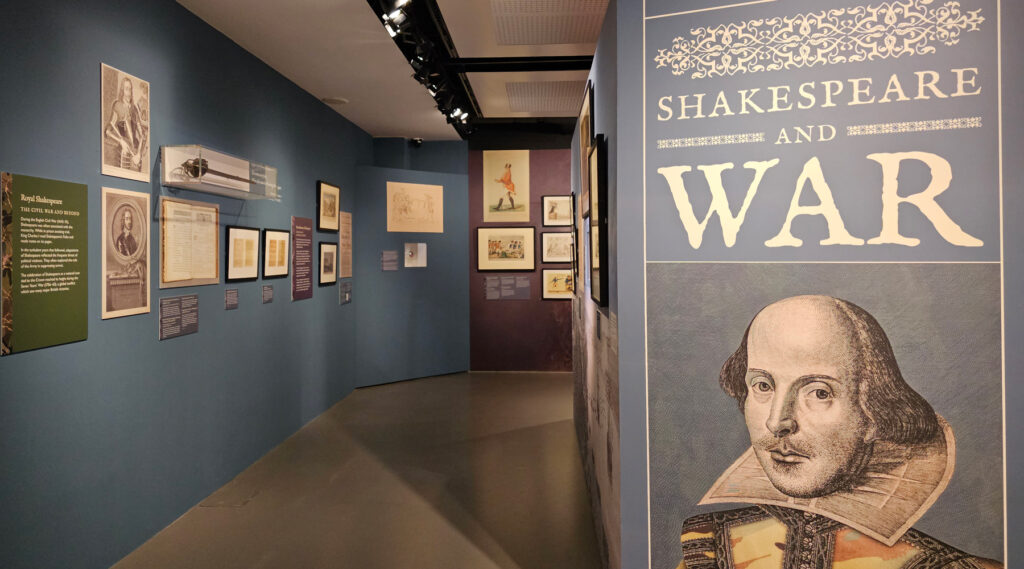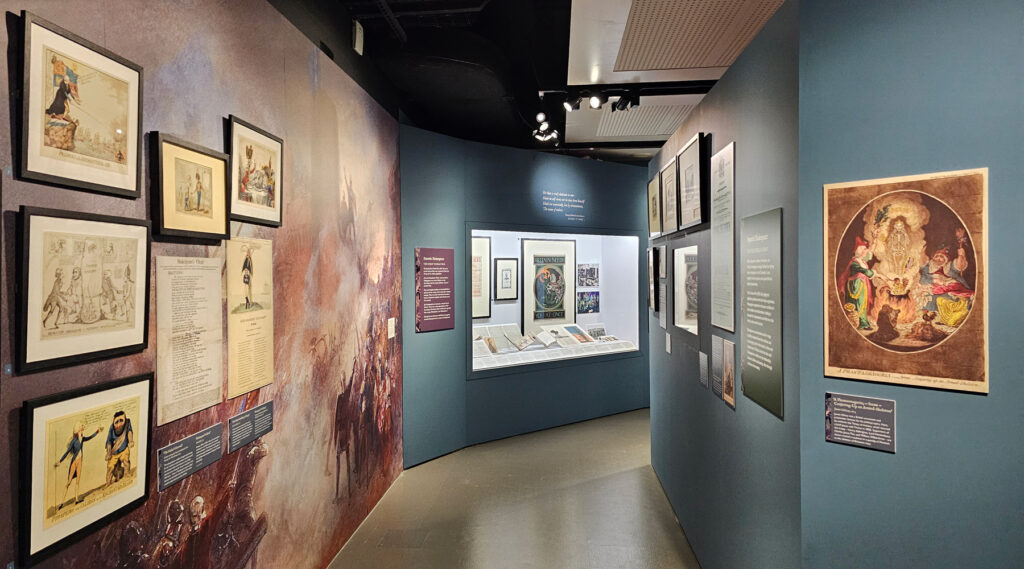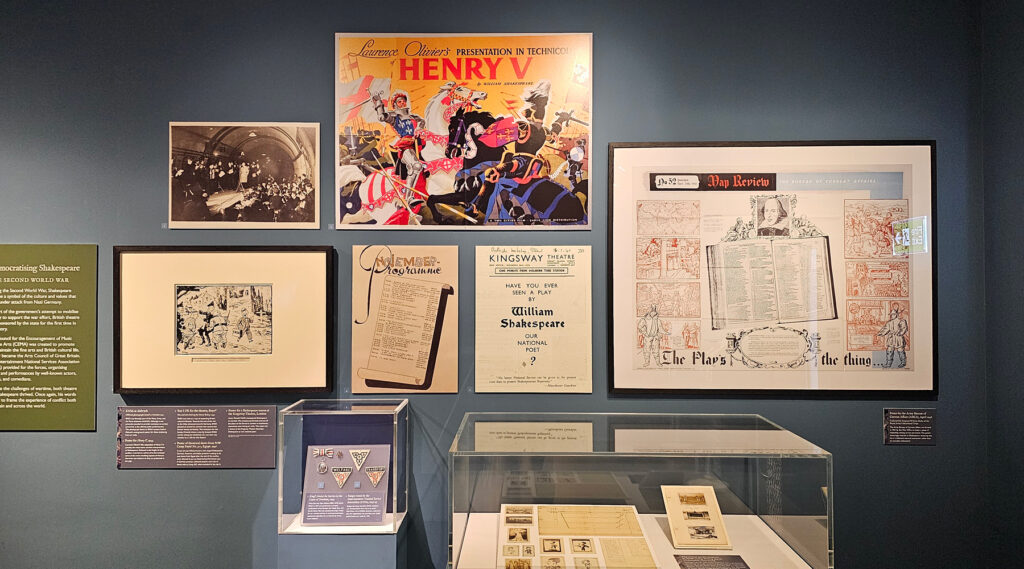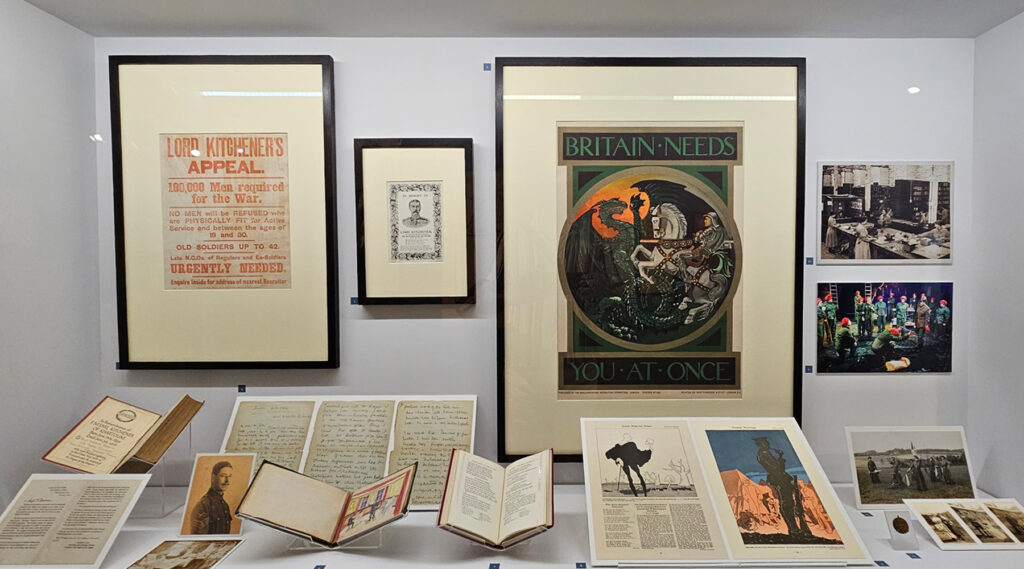The man responsible for some of the most famous lines in the English language about war is the subject of an exhibition looking at his legacy.
Shakespeare wrote about war a lot, understandably as frankly, battles between protagonists sell tickets, but what this exhibition looks at is less the plays he wrote than how they were coopted in later centuries to suit the politics of the times. Shakespeare’s plays have been used to support British propaganda at war, but also as a tool to criticise the British military’s actions, and both aspects are examined in this exhibition.
As a display, it consists mainly of prints of documents and explanatory labels that tell the story of how the plays were used and abused over the centuries.
An early example of how Shakespeare’s legacy gained political importance was during the English Civil War, when Shakespeare was seen as a Royalist against the Parliamentarian, even if the playwright himself probably never expressed any such views.
As a writer of plays, Shakespeare would have struggled during the interregnum, as theatres were closed by the government, which looked on them as decadent and ungodly. The restoration of the monarchy in 1660 also saw theatres reopen, and Shakespeare’s plays gained new favour.
There are examples here of how the plays were cited during conflicts from the American War of Independence to the French Revolution and the British conflicts in South Africa.
It’s also here where you can start to see examples of how Shakespeare is used to criticise British military excesses in conflict. Yes, criticism of the Empire isn’t modern revisionism – it’s been going on ever since the Empire was created.
Probably one of the most famous examples though of Shakespeare being used for propaganda is the government funding of Laurence Olivier’s Henry V in 1944, which was seen as a morale booster. However, the vainglorious attitude was criticised after the war as people recovered from the wartime shocks.
This became more pronounced, as the exhibition shows, when the reality of life in German prisoner-of-war camps became known, and how press photos of prisoners enjoying Shakespeare’s plays in the camps was itself German propaganda to claim prisoners were being well treated.
Such is the bard’s influence on the English language that he is still being cited in speeches, such as an eve-of-battle speech given ahead of the 2003 Iraq war. But also, more recent stagings of the plays have taken on contemporary twists. An example here of Henry V, also in 2003 is a metaphor for the controversy over the Iraq War — a clear contrast to how the same play was used in 1944 to support a war.
It’s those contradictions and explanations that add depth to the exhibition.
The exhibition is modest in physical size but packed full of fascinating insights into how one man’s writings have left such a profound legacy in the nation’s psyche that they can be repeatedly used to motivate the allies and demoralise the enemy.
The nice thing about the exhibition is that you don’t need to be a huge Shakespeare fan to be able to appreciate it as it’s far more about how the plays were used and twisted through history — with Shakespeare as a constant background tune to the British anthem.
I doubt many will leave without learning about our military and political history. When you do leave, take a look at how they’ve printed the exhibition credits next to the door as a mock playbill, which is a nice touch.
The exhibition, Shakespeare and War is at the National Army Museum in Chelsea until the end of March 2024. It’s free to visit and can be found on the first floor next to the British Army in Germany exhibition.
Exhibition Rating
National Army Museum
Royal Hospital Road, London
SW3 4HT











Leave a Reply